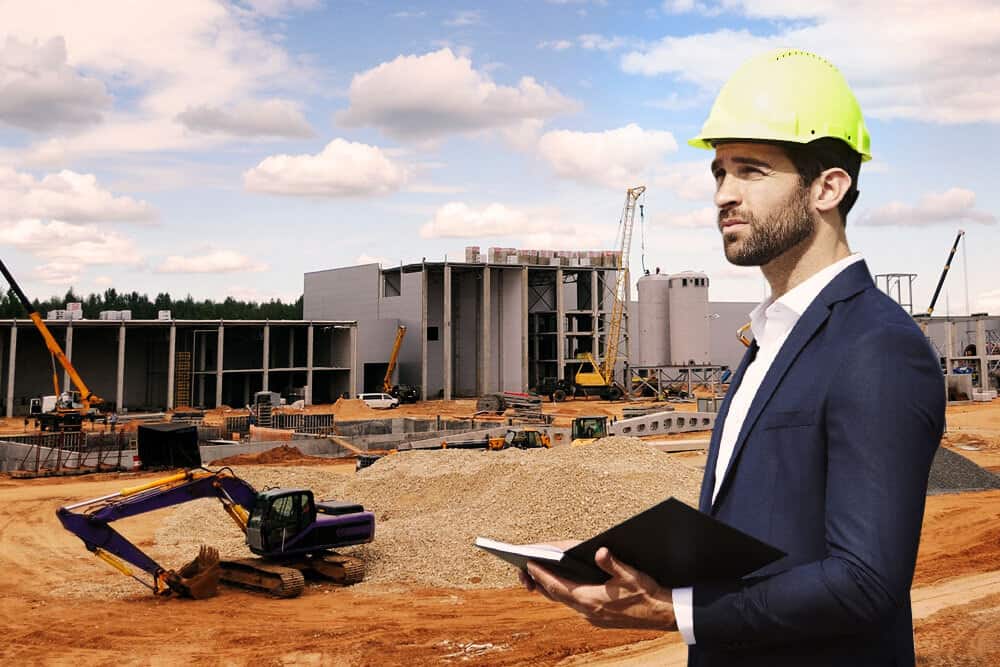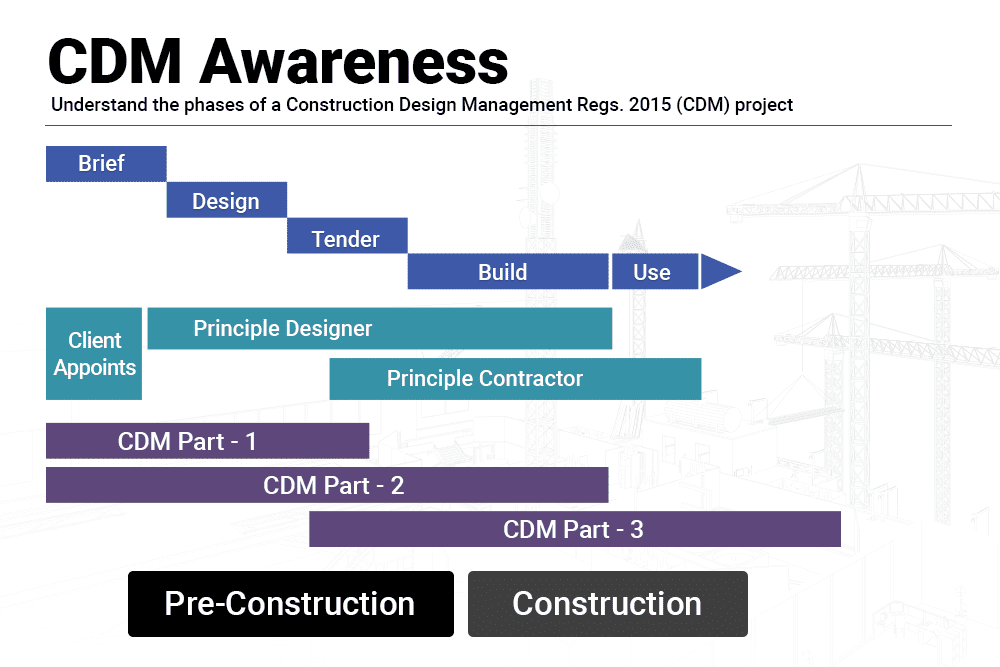
Any site in the UK where construction work is being performed should conform to the CDM regulations. CDM ensures that there is effective planning during the earliest design stages of a construction project. These regulations also provide guidelines for health and safety protocols during the actual construction phase.
To help those involved in the construction industry, be they workers, architects, managers or contractors, we have put together an overview of the CDM regulations. This knowledge will help you to ensure that your workplace is compliant with legislation and that any construction work is planned and carried out safely.
What are CDM Regulations?
Every year workers in the construction industry are injured or develop work-related illnesses. Fatalities in the construction industry are also commonplace, as shown by recent statistics from the Health and Safety Executive (HSE).
The Construction (Design and Management) Regulations 2015, also known as CDM regulations, were developed to help prevent construction accidents and fatalities. They ensure that construction work is carefully planned so that risks are managed from start to finish.
Under CDM, all staff must be competent to undertake their appointed tasks. Effective cooperation and coordination should be made a priority for the duration of any project. All duty holders should work together as a cohesive team. Information about potential risks and how they will be managed should be provided to all workers on site. Workers should be consulted and engaged with regarding any workplace risks.
CDM Training
Our CDM Training course gives a thorough understanding of Construction Design and Management Regulations (CDM Regulations) 2015, how a CDM project works and the risk assessment process to carry out a construction project.
CDM Regulations Summary
The CDM regulations are made up of five main parts concluding with a list of five schedules.
Part One – Introduction
The introduction contains interpretations and definitions of the CDM regulations. It also explains where the regulations apply.
Part Two – Client Duties
This section clarifies the duties of the client. A client is defined as any person or organisation who has commissioned a construction project and who has overall responsibility. Clients must appoint duty holders and make sure they perform their duties. Clients must also notify the HSE about certain types of construction projects
Part Three – Duty Holder Roles
Part three provides detail on various duty holder roles. Duty holders have specific legal responsibilities depending on their roles within a construction project. These responsibilities cover the initial design and planning stages right through to the construction phases.
Part Four - General Safety Requirements
There are a number of general safety requirements that must be put in place during a construction project. These can include arranging traffic routes or safety precautions required during excavations.
Part Five – Schedules
Part five provides specific guidance via five schedules:
- Schedule 1: Clarifies when the HSE must be notified of a construction project
- Schedule 2: Details the minimum welfare facilities that must be provided on all construction sites
- Schedule 3: Defines high risk construction activities and explains what arrangements need to be in place
- Schedule 4: Details transitional arrangements from a previous version of the CDM regulations. (The current version was implemented in October 2015)
- Schedule 5: Amendments related to construction legislation
CDM Management During all Phases of Construction
There are two phases of a construction project: the pre-construction phase and the construction phase.

The initial brief, design work and the tender to build are all part of the pre-construction phase. The building work itself and any subsequent use are part of the construction phase. The first three parts of the CDM regulations are applicable during these phases.
During the first phase of a construction project, it must be established whether or not CDM is applicable and the scope of CDM to be applied. The client must ensure that competent people or duty holders are engaged.
During the design stage, the principal designer is the leading role. Once the build tender has been let, the principal contractor takes over. However, the role of the principal designer continues throughout the construction phase since design changes are likely to occur. More than one person may play the role of principal designer.
Then, appropriate designs must be drawn up and information supporting the implementation of a safe project should be gathered. Once construction begins, CDM safety precautions must be in place to ensure that the building work is planned and carried out safely.
Parts two and three of the CDM regulations overlap during the pre-construction and construction phases. This is because design work continues throughout the construction phase and planning aspects of the construction phase have to be done ahead of time. In fact, CDM regulations expressly stipulate that no building work can occur before the construction phase plan has been prepared.
Does CDM Apply? 4 Examples
While the CDM provides a reasonably clear definition of what it considers construction work to be, there are still some grey areas. For instance, it can be difficult to determine if maintenance and repair work is covered by CDM regulations.
The HSE states that:
It is the last sentence that creates uncertainty around whether or not all maintenance and repair work is covered by CDM regulations.
You can read our full guide on the scope of CDM regulations to see if it applies to your work.
Example One: Boiler Repair
A boiler repair involving a mechanic who is called out to perform servicing on a boiler is not likely to be covered under CDM regulations. This is because the adjustment and repair of a fixed plant are not considered to be covered by CDM, according to the HSE.
Example Two: Heating System Installation
If the same contractor is then asked to install a new heating system using the same boiler, this will be covered under CDM. This is because it involves construction type tasks such as drilling into the structure of a building.
Example Three: Tree Cutting
A contractor is hired to clear a site of trees as part of a new construction project. This falls within the jurisdiction of CDM regulations as it is part of the broader construction project. However, tree cutting work that is not part of any other building or civil engineering project is not covered by CDM.
Example Four: Facilities Management
Unless they are part of other construction work, the following activities would not generally fall under CDM:
- Pressure washing the steps of premises
- Fixed wiring inspections
- Work involving mechanical floor washers
- Meter repair work
- Solar panel cleaning
- Servicing lifts
- Fault detection in an electrical or gas network
- Switching activities in an electrical substation
- Odd jobs such as door, floor or carpet repairs
Learn Your Legal Duties under CDM Regulations
Knowing what CDM regulations apply at what stage of a construction project – or even if they apply at all – requires a thorough understanding of the relevant legislation.
Human Focus offers online Construction Design Management (CDM) Awareness training and CDM Duty Holder Training. These courses are RoSPA assured and will provide participants with a thorough understanding of CDM regulations.
The training will empower participants with invaluable insights, enabling them to seamlessly integrate and uphold CDM principles throughout all phases of project lifecycles. With a keen awareness of CDM intricacies, individuals will confidently ensure the adherence and effective implementation of these essential regulations.





















